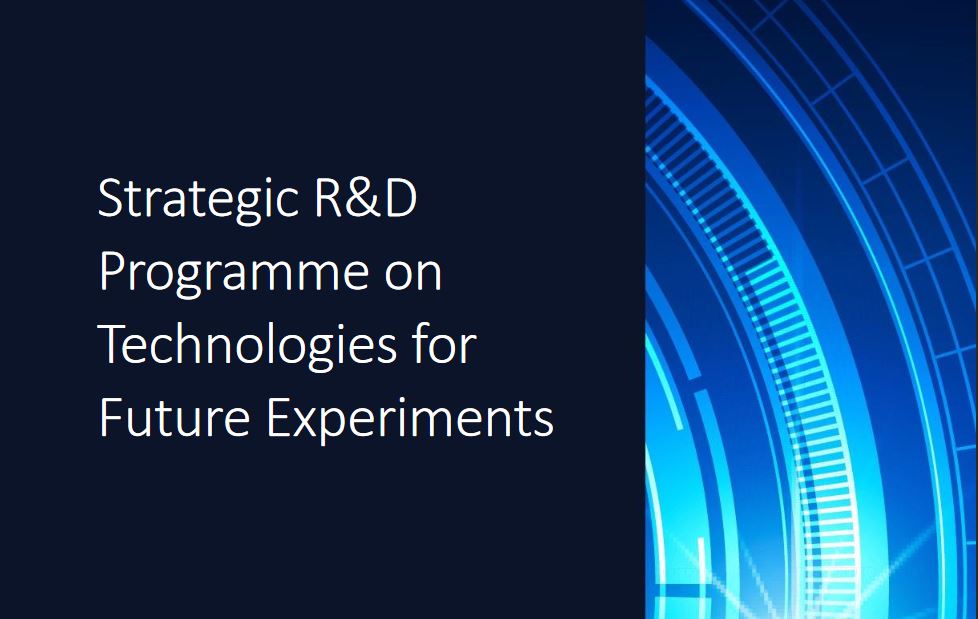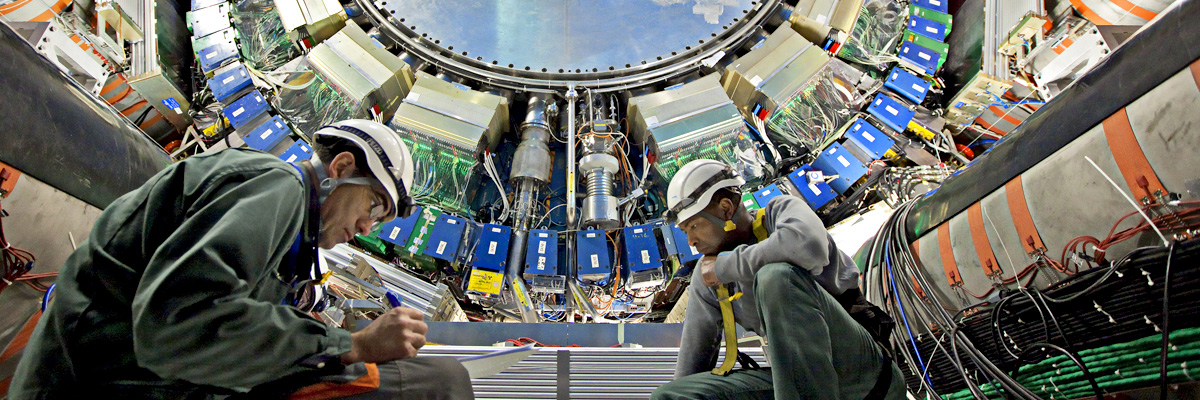Setting a roadmap for future detector technologies

To meet the experimental challenges posed by these design studies, CERN’s EP department is preparing to launch a rigorous R&D programme. This will be an initially five-year long initiative (2020-2024) covering a wide range of detector related technologies, including also novel electronics, mechanical structures, magnets and the related software.
In September 2018, during an open meeting at CERN the different groups working on detector R&D met to present their R&D plans and to conclude on a number of open issues before drafting the final report that will document key priorities and set concrete milestones. Manfred Krammer, head of the EP department stressed in his opening talk: “We must urgently identify relevant domains for future R&D. concentrating on the most important technologies, rather than on concrete detector applications”.
The workshop offered the opportunity to conclude on a number of R&D topics identified in the previous meetings. Experts from the eight working groups presented concise summaries of ongoing research efforts and discussed the next steps to tackle the challenges lying ahead. In the case of hadron colliders they are mainly related to the very high pile-up, the high radiation loads and need for faster throughput of larger amounts of data. At the precision frontier, covered by proposals for lepton colliders, very low material budget and high granularity calorimeters are needed. Finally, the cooling and powering systems, software needs, refined mechanics and sophisticated electronics and detector magnets are key topics that add to the versatility of the discussed R&D programme.
Previous similar initiatives, the DRDC project in the 1990s and the White Paper R&D programme (2008-2011) have been instrumental in providing the technologies presently in use at the LHC experiments and their foreseen upgrades. Among the recent successes are the validation of the CMOS 130 nm technology, the GEM single mask technique, radiation hard optical links, the CernVM virtual machine environment and DC-DC converters.
During the meeting, conversations focused on the different available options in detector technologies, the predictions for the development of future electronics including also forecasts from the industry and alternative cooling and engineering options. Key for the success of this programme is to enable efficient cooperation between external groups from universities and other research centres and unleash the potential for further cross-fertilization with other industries that have similar challenges.

Since the first edition of this workshop, in March 2018, the working groups prepared concrete working plans while they had the chance to iterate on them together and identify possible collaboration and other areas where synergies could boost future work. Christian Joram, deputy Head of EP department and organizer of the workshop notes: "This R&D programme aims to accelerate the development of new technologies. Considering the number and complexity of the challenges ahead, this initiative is just timely".
The results of this R&D will be building blocks, demonstrators and prototypes, which will form the technological basis for new experiments and experiment upgrades beyond the LHC Phase-II upgrades scheduled for the long shutdown LS3. Planning today these R&D efforts is vital for the success of future experiments that could cope with different physics requirements.
CERN’s contributions and collaborations with numerous institutes offers a precious experience, and guarantees the ability to be at the forefront of technological disruption in detector technologies since the beginning. The required R&D work will be carried out jointly with external groups from universities and research labs while special focus will also be given to the industrialization of these technologies in partnership with the industry.
Launching today a clear and wide R&D programme for future projects can guarantee the success of this effort and attract more institutes, including industries/domains that had not previously collaborated with CERN. The recent workshop highlighted the tremendous potential, which is documented in a public report that can be found HERE.
A short summary of the final report will serve as input to the European Strategy Group in view of the 2020 update of the European Strategy for Particle Physics.
